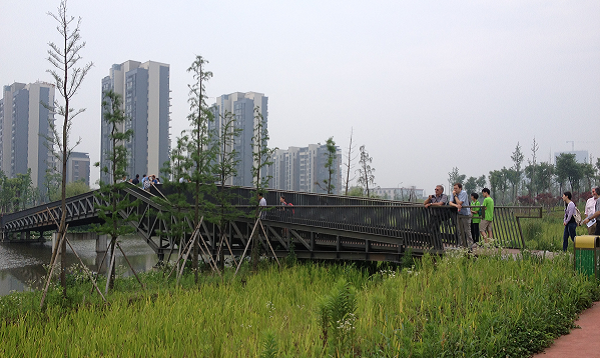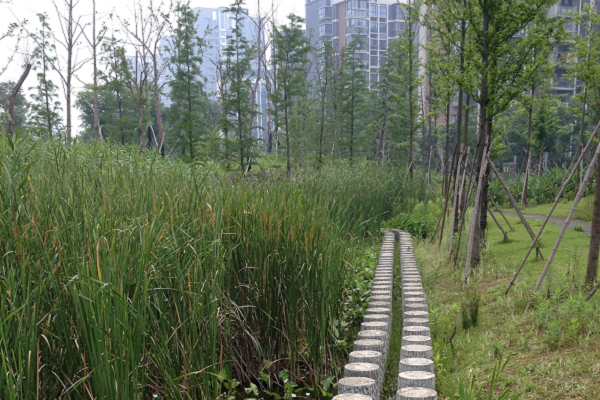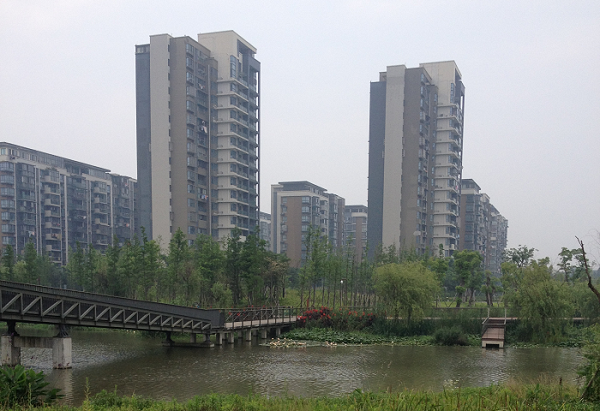
July 13, 2018, by Blue-Green team
Aligning ancient and modern approaches to sustainable urban water management in China
Flood prevention and risk management is high on the state agenda in China, owing in part to disastrous large-scale flooding in Beijing in 2012. Rather than solely relying on increasingly larger piped (grey) infrastructure, there has been investment in more natural approaches to manage stormwater, utilising blue and green infrastructure and sustainable drainage systems (SuDS). The ‘Sponge City’ initiative, which launched in 2015, promotes self-sufficiency in water management and resilience against extreme weather events through SuDS and water sensitive urban design (WSUD). The initiative aims to preserve and restore natural waterways while tackling five key water management issues:
- water pollution
- flood risk
- waterlogging and saturated soils
- freshwater preservation
- water conservation
In September 2015 the Chinese government approved the development of 16 model Sponge Cities in urban districts including Wuhan, Chongqing and Xiamen. This involved the retrofit of existing cities and introduction of SuDS and Blue-Green infrastructure to facilitate the absorption and reuse of rainwater. This has now been extended to 30, including Ningbo, Zhejiang province, where the University of Nottingham has a campus. As part of the 2014-2015 ‘Clean Water for All‘ research initiative, academics involved in the Blue-Green Cities research project collaborated with colleagues at the University of Nottingham Ningbo China and investigated the ancient and modern approaches to water management in Ningbo.
Ningbo: an ancient Blue-Green City and modern Sponge City
Ningbo is a rapidly urbanising delta city facing challenges regarding the management of water and flood risk coupled to extensive economic development and growth. As Tang et al., (2018) note in their discussion of opportunities to integrate Blue-Green infrastructure into current city development in Ningbo, there is history of natural flood management and drainage techniques employed to help manage urban water. Systems of ponds, rivers and wetlands supplied Ningbo with freshwater for drinking and irrigation, and are still visible in western parts of the city. In addition, agricultural practices, such as growing rice, were reliant on the flooding of arable land in the floodplain to support growth of semi-aquatic rice paddy species. Modernisation during the late 1970-90s saw an increase in subsurface piped drainage infrastructure and the building of large mountain dams to store freshwater and supply the growing city.
More recently, with the new plans to create a Sponge City in Ningbo, there has been a resurgence of traditional, natural methods to manage stormwater and reduce the risk of flood damage during typhoons. This includes infrastructure such as the Ningbo eco-corridor, providing “ecological purification, water storage and a place for people to escape far from the noisy city and to learn or exercise” (source: eco-corridor notice board).
The strong political will to implement Sponge Cities that is apparent creates an abundance of emerging opportunities for China. This may help to overcome one of the key socio-political challenges to widespread implementation (Tang et al., 2018).
Further reading
Read more on sustainable water management in Ningbo in a new paper from the research team:
Tang Y-T et al., (2018). Aligning ancient and modern approaches to sustainable urban water management in China: Ningbo as a ‘Blue-Green City’ in the ‘Sponge City’ campaign. Journal of Flood Risk Management, 2018. DOI: 10.1111/jfr3.12451.
Chan et al., (2018) further discuss the Sponge City concept in China in a new paper: “Sponge City”in China—A breakthrough of planning andflood riskmanagement in the urban context.
Helen Roxburgh also writes for The Guardian on Sponge Cities (Dec 2017)
Blog post by Emily O’Donnell, University of Nottingham.
No comments yet, fill out a comment to be the first



Leave a Reply